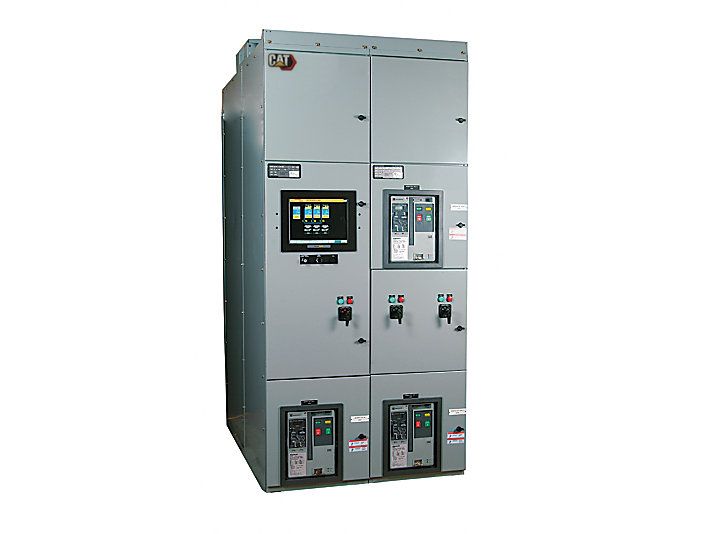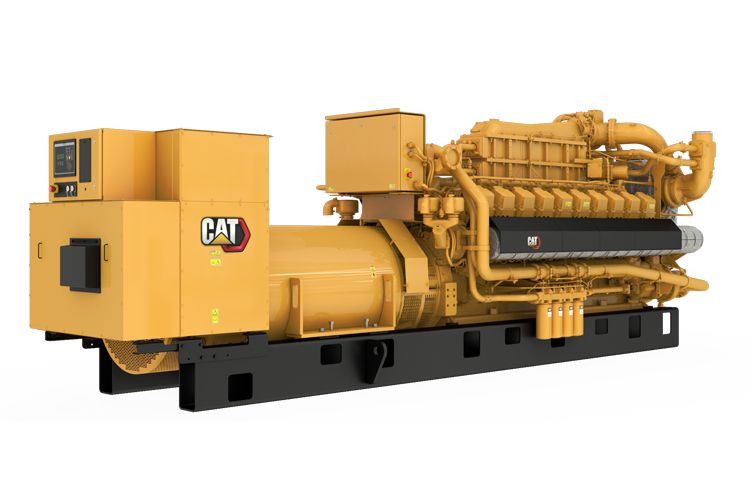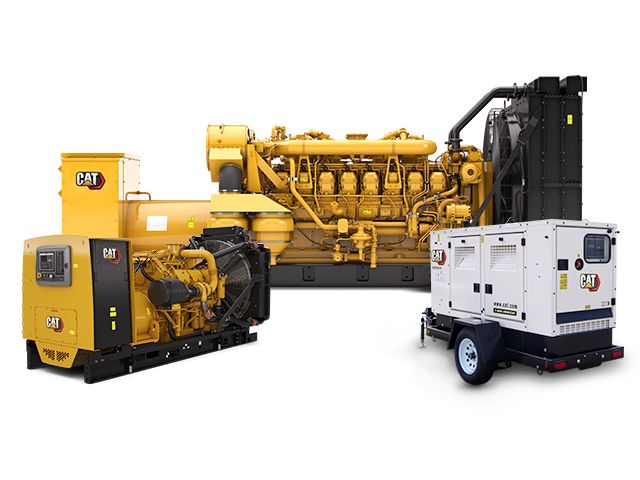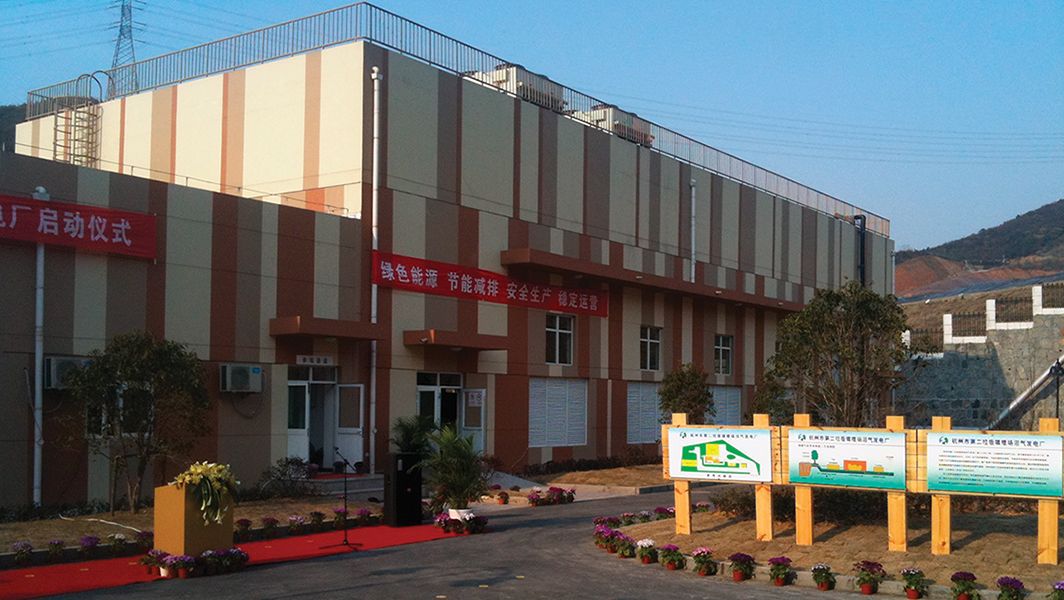POWER NEED
The Seminole Road Landfill is the second-largest permitted, municipal solid-waste landfill in Georgia. Located in DeKalb County, the 1,800 tons of refuse the landfill accepts each day consists predominantly of residential solid waste. Through the natural process of bacterial decomposition of organic material contained in the landfill, a 50/50 mix of methane and carbon dioxide is produced as a byproduct.
The DeKalb County Seminole Road Landfill “Green Energy” Project was designed to meet the need of Georgia Power (a subsidiary of Southern Company) to generate revenue for DeKalb County, Georgia, from the sale of green power to the local electric power utility grid. Cat® generator sets and switchgear provide electric power for DeKalb County under contract to Georgia Power to help the utility meet its requirements to offer green power from renewable energy sources to consumers. Green power can be described as electricity produced in an environmentally friendly manner, from sources that include the sun, wind, and, in this project, methane generated from the natural decomposition of municipal solid waste in a landfill that is used to fuel low-emission electric power generator sets.
Methane gas from the Seminole Road Landfill is captured to fuel the power system. Using Cat generator sets and switchgear, the electric power generated is then metered and fed into the local Georgia Power utility grid to be resold as green power to residential and commercial customers. The project not only generates revenue for DeKalb County, but it also produces electric power from methane that previously had been “flared,” or burned off to the atmosphere.
SOLUTION
Originally commissioned and put on line on October 12, 2006, the Seminole Road Landfill Project taps the existing source of methane in the landfill through a process designed and installed by the county. Initially, pipes are inserted up to 120 feet into the landfill to provide a point of release for the landfill gases. A slight vacuum is then applied in the pipe to draw the gases into and up through it to the pre-treatment facility, where the methane is collected and treated for use as fuel in the generator sets.
At most municipal solid-waste landfills, all of the methane and carbon dioxide mixture is destroyed in a gas collection and control system or utility flare. However, at the Seminole Road Landfill, at least two-thirds of the methane that would ordinarily be piped to the flare station is redirected to the fuel pre-treatment system and then ultimately to the generator facility. The remaining one-third of the methane is held in reserve to compensate for any fluctuations in methane quantity or content and thereby ensure continuous electric power output. At the generator facility, two 20-cylinder Cat G3520C engines run continuously, burning the extracted methane, while any remaining gases are sent to the flare station to be safely burned off. Together, these Cat generator sets produce 3.2 megawatts of electricity per hour, which is sent through Cat switchgear to Georgia Power’s River Road Substation. From the substation, residential and commercial Green Energy subscribers purchase electricity in 100-kilowatt-per-hour blocks each month. Cat switchgear was installed after the first phase of construction as the first step in expanding the facility, and plans are currently being finalized for permitting a third generator set as early as 2009.
RESULTS
According to Michaell Bever, senior sales engineer for Yancey Power Systems, the strength of the Cat product was a significant factor in DeKalb County’s selection of Caterpillar® equipment for the project.
“The Cat G3520C generator sets are unique in the industry in offering high power density. This means that they produce a very high output of electric power per square foot of space,” explained Bever, who assisted in the project’s contract, design, and development. “When you add in their low nitrogen oxide (NOx) emissions and cost-competitive initial price and operating expenses, it’s clear they were the perfect fit for this project.”
This observation is echoed by Billy Malone, an assistant director with the DeKalb County Sanitation Division who led development and execution of the project.
“Cat got the NOx emission levels way down for us. The NOx emission limit allowed by our Georgia Environmental Protection Division permit for each engine is 0.5 g/bhp-hr, and the two Cat engines currently emit 0.26 and 0.24 of total NOx—half of our permitted total NOx emission cap,” said Malone.
The Seminole Road Landfill Project has proven to be an overwhelming success in generating green power. According to Stan Meiburg, EPA deputy regional administrator, the Seminole Road Landfill Project will offset fossil fuel greenhouse gas emissions of 17,100 metric tons of carbon dioxide equivalents per year—the equivalent of removing emissions from 3,300 vehicles on the nation’s roads, reducing oil consumption by 40,000 barrels, or planting 4,700 acres of forest.
“This project allows DeKalb County to take an otherwise wasted source of energy and use it to generate electricity, which benefits the environment and area residents through lower emissions,” said Meiburg.
In fact, landfill gas is the only renewable form of energy that directly reduces the amount of pollution released into the atmosphere. Moreover, the Cat generator sets are industry-leading low-emission units that produce power from a fuel source while emitting minimal levels of volatile organic compounds (VOCs).
The Seminole Road Landfill Project has generated more than just electric power. The $5 million project generates revenues of approximately $100,000 per month for DeKalb County through the sale of green energy to Georgia Power. The landfill is expected to close in 2071, but it should continue yielding sufficient levels of methane for the project through 2100.
“Last year was our first full year of production, and we were able to attain an average generator set availability of over 91 percent,” said Malone. “We were under contract with Georgia Power to produce 22,500 MW, and we met that goal.” To place this output in perspective, Malone notes that the two Cat generator sets, producing a combined 3.2 MW of electric power per hour, are generating enough electric power for approximately 2,500 homes.
“This facility is a win-win for all parties—DeKalb County, Georgia Power, and the local residents,” concludes Bever.
County, state, and federal officials held the official ribbon-cutting for the Seminole Road Power Project on December 8, 2006, concluding almost two years of efforts by county officials to participate in Georgia Power’s alternative energy program. The utility has agreed to buy electric power from the county at higher rates than the cost of power generated from fossil fuels. The ten-year agreement will recoup the county’s capital outlay of $5 million in less than five years, Malone said. Any profit thereafter will be used to further reduce sanitation rates for DeKalb County Sanitation customers, he adds.
“We don’t receive any general tax revenues for our solid waste operations,” explains Malone, referring to DeKalb County’s funding structure for its Sanitation Division. “Therefore, the extra revenues that we generate through this plant help offset any of the cost that we would otherwise have to charge our customers for sanitation services.”
And beyond the plant’s revenue stream that is helping reduce sanitation costs for DeKalb County, Malone points out one final added benefit: preserving U. S. jobs.
“We’re pleased that we were able to use an American-made engine,” said Malone, referring to the Cat generators. “We know that other manufacturers outside of the United States make similar engines that burn methane to make electricity. It was good to have a Cat engine, designed from the ground up to run on methane, that has proven itself to be up to the task.”
Download Power Profile.









